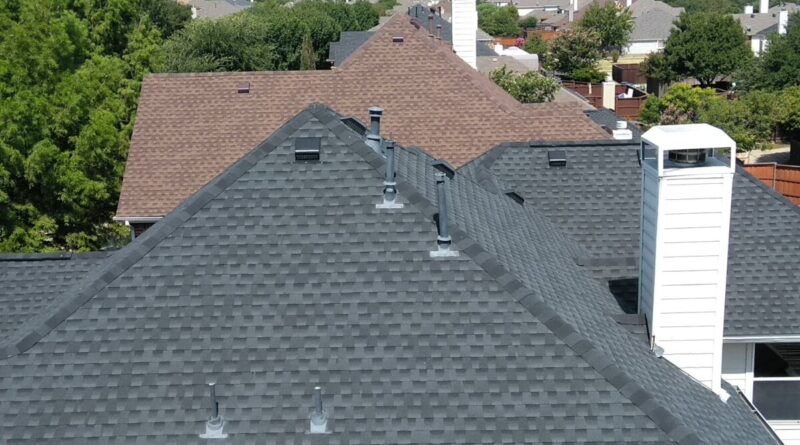Key Things To Look For
Attic Inspections Can Reveal the Health of the Ventilation, Roof, & More
by Paul Scelsi, marketing communications manager, Air Vent
(Editor’s Note: Paul Scelsi is marketing communications manager at Air Vent and leader of its “Attic Ventilation: Ask the Expert™” seminars on www.airvent.com. He hosts the podcast, “Airing it out with Air Vent,” and he’s the chairman of the Asphalt Roofing Manufacturers Association Ventilation Task Force. He is the author of the book, “Grab and Hold Their Attention: Creating and Delivering Presentations that Move Your Audience to Action.”)
To properly understand and diagnose any health concerns with a patient, a doctor examines the patient. In a similar way, to properly understand and diagnose if the residential attic ventilation system is working as it should, an attic inspection is needed. The industry tells us time and again that the best way to understand what’s going on with the attic ventilation is to go inside the attic when it is safe and practical to do so. We surveyed residential roofing pros across North America asking for the key things they look for when doing an attic inspection. Jake Jacobson, vice president of sales, SF5 Construction, Little Elm, Texas, was one of the respondents and he elaborated on his responses in our podcast interview with him.
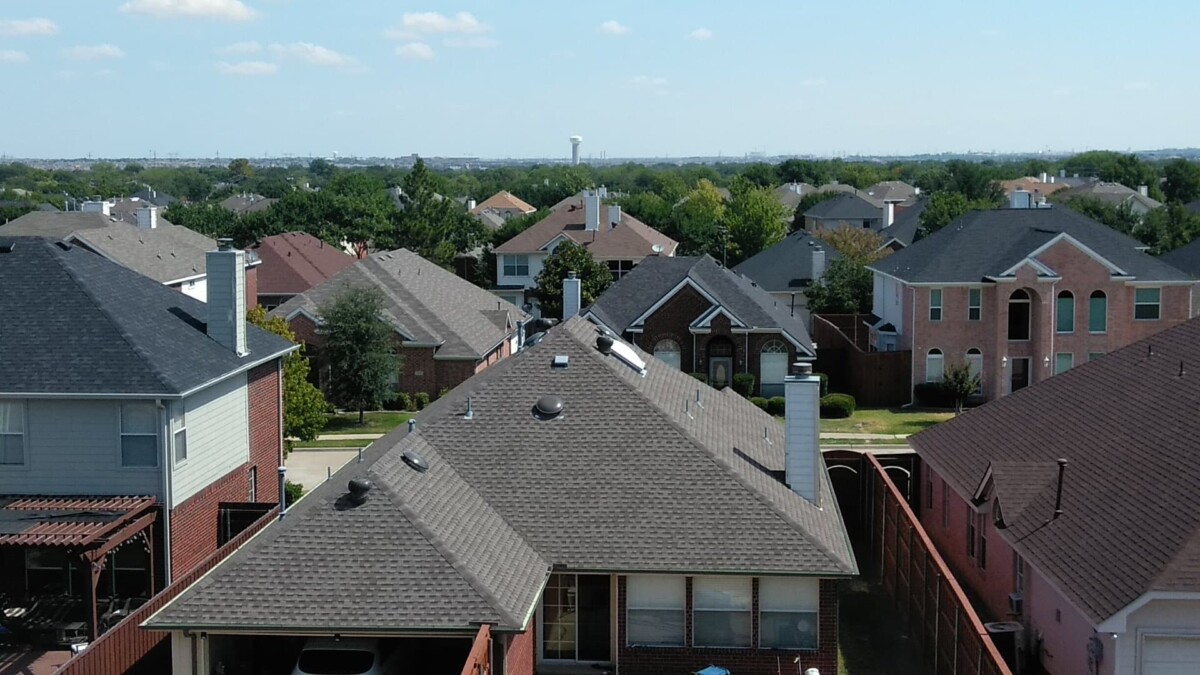
Photo courtesy of Jake Jacobson
“It sometimes is a challenge to get into attics, especially older homes with smaller attics,” Jacobson said, acknowledging that his 6’ 2” frame makes matters tricky. “We often send the smallest person on our crew to go into the attic. We make sure the person is trained and qualified.”
Another challenge with attic inspections is maneuvering around anything placed up there by the homeowners. “Usually the people who have been living in their homes longer have more items up in the attic such as decorations and storage. So you have to work around those items,” Jacobson said. “But if you can get up there and do a proper assessment, that’s definitely the way to go.”
It Starts Outside
“The first thing we do is start from the outside and take note of the attic exhaust ventilation. Just because you see the vents on the roof doesn’t mean they are working properly, so we make some notes of what we can see externally,” Jacobson said. One of the first external checkpoints is making sure two or more different types of attic exhaust vents are not installed on the same roof above a common attic. Mixing types of attic exhaust vents can short-circuit the airflow and potentially cause weather infiltration through one of the exhaust vents. From there Jacobson works his way to the attic intake vents.
“The intake vents are usually a much longer process. Intake vents can become clogged with dirt, they can be painted over, and they may not even have a hole cut for the airflow. So we make notes as we look,” he said. Included in the notes is calculating the quantity of exhaust and intake vents visible and estimating the total net free area airflow those vents are providing. Eventually, Jacobson will compare what he sees and estimates to what the attic actually needs based on the attic’s square footage. “From there we get into the attic, and we actually investigate. Are those intake and exhaust air spaces freely moving? We also double-check the calculations to confirm if the attic has a balanced amount of intake airflow and exhaust airflow,” Jacobson said.
Trick Question
One of his favorite questions he likes to ask homeowners is a trick question that Jacobson announces as such. “I’ll ask homeowners if they want their home built to code standards, and they always say yes. Then, I tell them that they don’t want their home built to code, they want it built better than code standards,” he explained. Jacobson ties this question into his recommendation to homeowners concerning the amount of attic ventilation needed. He emphasizes to homeowners the difference between the minimum amount of attic ventilation that building code requires and exceeding the minimum amount for better results.
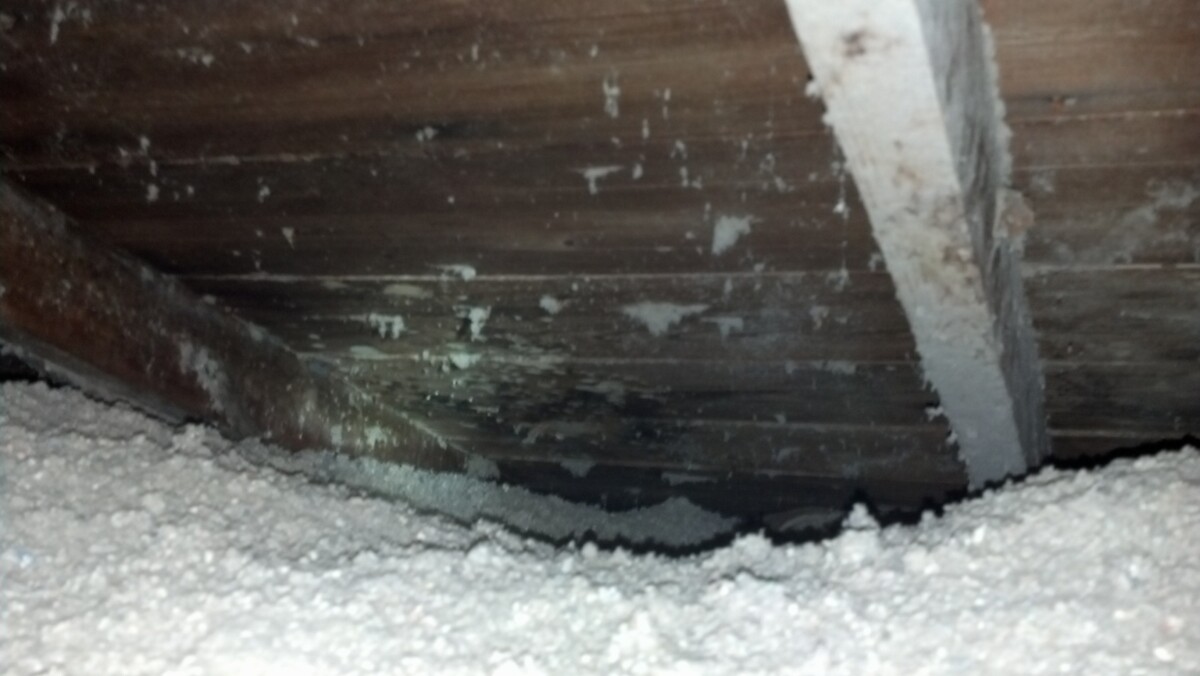
Insulation baffle missing
Photo courtesy of Jason Avery, Lakefront Roofing and Exteriors, South Haven, MI
“You don’t want the pilot flying your plane who just barely passed his exam landing your plane in a cross wind on a foggy night,” Jacobson said, driving home the limitations of meeting minimum attic ventilation code standards and nothing more. “We’re always looking for better than minimum code standards for the attic ventilation. How can we improve what’s there? How can we maximize it?”
Once inside the attic, Jacobson looks at the intake vents to make sure they are clear and free of anything blocking the airflow. “Is the insulation blocking the intake vents? In some of the older homes we’ve been in, someone has added more insulation in the attic. We check to make sure it’s not blocking the intake vents,” Jacobson said. He sometimes finds boxes inside the attic pushed all the way up against the lower edge of the roof hindering the airflow from the intake vents.
Red Flags
One way a homeowner can check to see if the intake vents are clear and free is to look inside the attic toward the eave of the roof along the perimeter of the house during daylight hours. If daylight is visible, the intake vents are clear. If daylight is not visible, ask why? “You can also do this in darkness if someone has a flashlight outside the house shining the light into the intake vents,” Jacobson explained, which is a tip he likes in the winter with reduced daylight hours and many homeowners come home to darkness. “Someone in the attic should see the light from the flashlight outside the house.”
Jacobson points out that some attic designs are complicated and seeing the daylight or flashlight may not be obvious, but the airflow might be fine. Also, there are some intake vents installed on the roof near the eave that do not readily allow the visual inspection of daylight or a flashlight. A tip Jacobson gives homeowners to help them keep their attic intake vents clear of debris and dirt is to once a month use the leaf blower aimed at the vents from outside the house. “If they don’t have one, I suggest they ask their lawn service to do it for them,” he said. “If it’s a two-story house it gets to be a bit of a situation. Get inventive and figure out a way to do it. You have to try to keep that air pathway clear.”
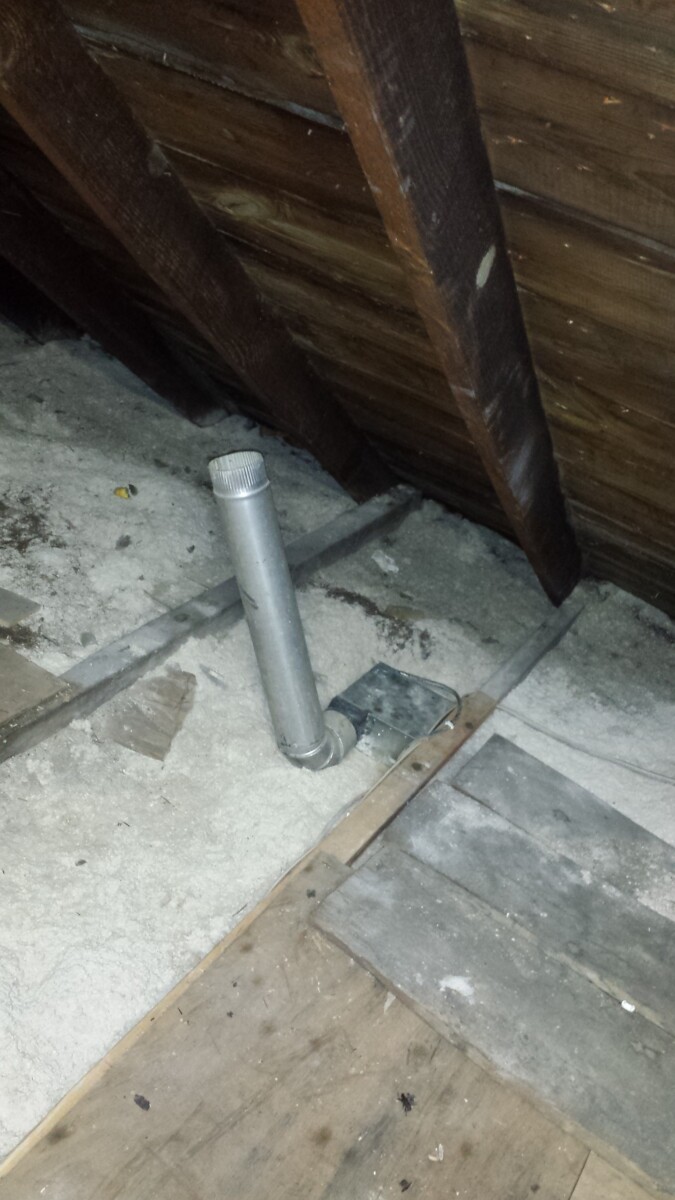
Bath fan vented into attic
Photo courtesy of Jeff Heitzenrater, Triple Peaks Roofing, Olmstead Falls, OH
Jacobson also examines the attic exhaust vents to be sure they have airflow openings. “We’ve been in attics where crews installed ridge vent, but the airflow slot was not cut into the roof,” he said. “Or the slot is cut too narrow or too wide.” If the slot is too narrow, it restricts the airflow. If the slot is too wide, it risks weather infiltration because the exposed slot is unprotected by the vent. “The homeowner may or may not even know to check for this. Proper airflow through the vents is important. Just as important is preventing the entry of weather through the vents.”
Access inside the attic allows Jacobson to check if the motors are burnt out inside the roof-mount or gable-mount power fans. He’ll suggest that homeowners look inside the attic on a hot Saturday to see if the blades on the fan are spinning. If not, has the motor burnt out? He checks whether or not the individual box vents or wind turbines have the correct size hole to allow proper exhaust airflow.
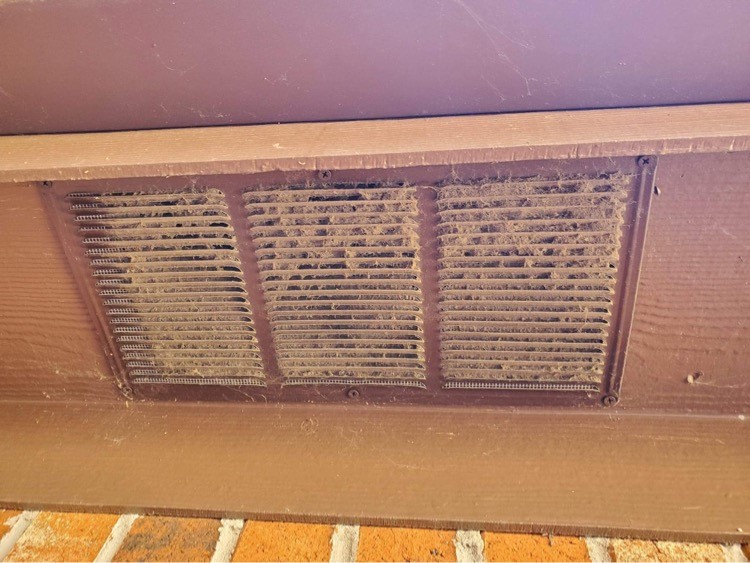
Dirty undereave vent
Photo courtesy of Jake Jacobson
The Attic Ventilation Checklist on the Air Vent website lists interior and exterior red flags to watch for as suggested by roofing professionals. They include: moisture damage, rust on exposed nails, compacted attic insulation, mold and mildew in the attic, and blackened plywood. An attic inspection can also reveal if the ductwork from the bathroom fan is properly vented to the outdoors. Otherwise, the moisture from the bathroom fan can cause damage inside the attic and beyond. Jacobson says anytime a homeowner telephones thinking they have a roof leak, it’s almost always through a man-made penetration through the roof, not the actual roof covering. “So while I’m on the roof inspecting, I look to make sure all penetrations are properly sealed,” he said.
